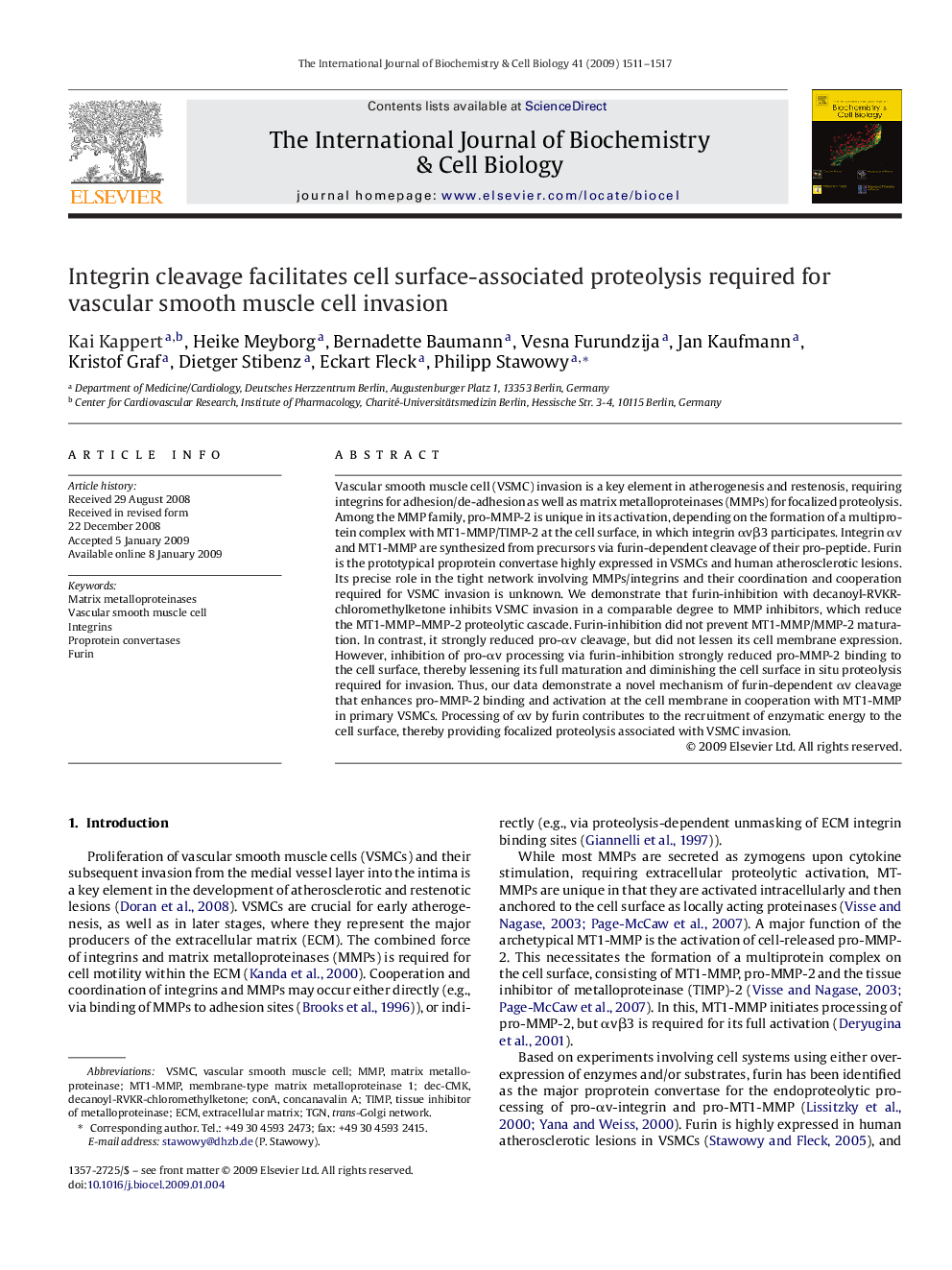| Article ID | Journal | Published Year | Pages | File Type |
|---|---|---|---|---|
| 1984926 | The International Journal of Biochemistry & Cell Biology | 2009 | 7 Pages |
Vascular smooth muscle cell (VSMC) invasion is a key element in atherogenesis and restenosis, requiring integrins for adhesion/de-adhesion as well as matrix metalloproteinases (MMPs) for focalized proteolysis. Among the MMP family, pro-MMP-2 is unique in its activation, depending on the formation of a multiprotein complex with MT1-MMP/TIMP-2 at the cell surface, in which integrin αvβ3 participates. Integrin αv and MT1-MMP are synthesized from precursors via furin-dependent cleavage of their pro-peptide. Furin is the prototypical proprotein convertase highly expressed in VSMCs and human atherosclerotic lesions. Its precise role in the tight network involving MMPs/integrins and their coordination and cooperation required for VSMC invasion is unknown. We demonstrate that furin-inhibition with decanoyl-RVKR-chloromethylketone inhibits VSMC invasion in a comparable degree to MMP inhibitors, which reduce the MT1-MMP–MMP-2 proteolytic cascade. Furin-inhibition did not prevent MT1-MMP/MMP-2 maturation. In contrast, it strongly reduced pro-αv cleavage, but did not lessen its cell membrane expression. However, inhibition of pro-αv processing via furin-inhibition strongly reduced pro-MMP-2 binding to the cell surface, thereby lessening its full maturation and diminishing the cell surface in situ proteolysis required for invasion. Thus, our data demonstrate a novel mechanism of furin-dependent αv cleavage that enhances pro-MMP-2 binding and activation at the cell membrane in cooperation with MT1-MMP in primary VSMCs. Processing of αv by furin contributes to the recruitment of enzymatic energy to the cell surface, thereby providing focalized proteolysis associated with VSMC invasion.
